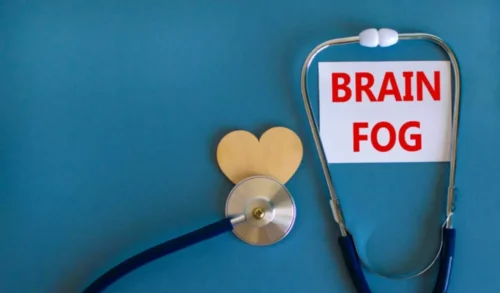Alcohol Withdrawal Syndrome
by baraknew

For those struggling with alcohol and depression, seeking help is crucial. Fortunately, there are many resources and treatment options available for those in need. Frequent boluses of diazepam are given intravenously until the patient is calm and sedated. Those with severe or complicated symptoms should be referred to the nearest emergency department for inpatient hospitalization.

Treatment / Management
- Additionally, the HPLC of β-endorphins revealed a greater amount of acetylated β-endorphins in the neurointermediate lobes of ethanol fed rats, with the increase being most significant on days 8 and 15 following ethanol cessation.
- Behavioural abnormalities related to frontal lobe structural and functional alterations are studied in chronic alcohol abusers with and without Korsakoff’s amnesic syndrome.
- Experiencing both depression and AUD can be a difficult road, but recovery is possible.
- These emotional crashes can trigger or worsen depressive episodes, feeding into the harmful cycle of alcohol and depression.
Last, but not least, combination therapy, such as sertraline with naltrexone and acamprosate with escitalopram, has been shown to improve both drinking and mood outcomes in depressed alcoholics 199,200. Despite scientific evidence indicating the correlation between simultaneous occurrence of AUD and depression, the precise aetiology of ethanol-induced depression is still yet to be determined 99. Genetic predisposition, as well as oxidative stress, have been identified as risk factors 99,101. Recent studies conducted by researchers have conceptualized a marked relationship between inflammation and oxidative stress, in addition to neurodegeneration 101.
TREATMENT OF ACUTE ALCOHOL WITHDRAWAL SYNDROME
For instance, Heyser et al. studied the effect of methylnaloxonium administration on ethanol self-administration in rats via oral route. In this study, male Wistar rats underwent a 30 does drinking make your depression worse min training in a limited access paradigm daily to observe how they respond to 10% w/v ethanol or water. Methylnaloxonium was then injected into the amygdala and nucleus accumbens of the rats, where their voluntary self-administration behaviour was studied 15 min later.
Management of moderate to severe alcohol withdrawal syndrome
- Last, but not least, the ongoing development of promising novel therapeutic agents should be motivated to bring a glimpse of hope to society for the management of negative emotional states experienced by alcoholics during withdrawal so that their general well-being can be assured.
- Although there are differences in the observed individual oxidative stress parameters studied, it is generally agreed on that alcohol abuse and alcohol withdrawal could exacerbate oxidative stress, and this has been linked to depression and anxiety.
- At the maximum dose of 50 μcg, CRF-like activity exhibited is not statistically significant.
- The inconclusiveness of previous research findings suggests that future research should be directed towards resolving confusion regarding complex interaction between alterations of the endogenous opioid system and ethanol consumption.
- Opioid receptors residing in the VTA and NAc regulate dopamine release following both acute and chronic ethanol consumption, where compulsive ethanol seeking behaviour can be attributed.
- If you’ve used alcohol, heroin, meth, or other substances for only a short time or have taken only small doses, you might not experience withdrawal.
Millions of people join support groups to help stop drinking and stay stopped. Studies show support groups play an instrumental role in helping people develop healthy social networks that result in continued sobriety. However, medical complications can occur during the acute phase of withdrawal. For those with alcohol use disorder, withdrawal is just the first (but very important) step on a long journey to recovery. These first few weeks are critical because they are when the risk of relapse is highest.


Roni and Rahman have reported disruption of BDNF expression in the dentate gyrus and CA3 region of the hippocampus in animals which abstained from chronic ethanol exposure 162. BDNF, also implicated in alcohol addiction, was reported to be low in rats under ethanol withdrawal by Ghitza et al. 163. This was also seen in the study by Hou et al., where significantly lower levels of protein BDNF were seen in the hippocampus and nucleus accumbens of the ethanol group after withdrawal compared to the control after withdrawal 164. A recent study found that Z-guggulsterone, derived from the gum resin of Commiphora mukul, could activate the BDNF signalling cascade, as well as increase hippocampal neurogenesis, thus producing antidepressant-like effect 165. Genetics may play a role in the development of pathological alterations of BDNF expression. For example, single nucleotide polymorphism (SNP) in the BDNF gene, whereby valine residue is replaced with methionine residue in codon 66 (Val66Met), would ultimately impair neuronal activity-mediated BDNF secretion 166 and cause the person to be more vulnerable to depression 167.
- However, as the experiment proceeded, aggravation of withdrawal-induced seizure was observed, which can be attributed to lorazepam withdrawal 142.
- Alcohol use disorder can include periods of being drunk (alcohol intoxication) and symptoms of withdrawal.
- Major depressive disorder involves persistent and prolonged symptoms, but depression, in general, takes on many different forms.
- However, when the person consumes ethanol to avoid experiencing unbearable physical and psychological discomfort, the phenomenon would be otherwise known as negative reinforcement, and this is how a person seeking for casual pleasure ultimately becomes an ethanol addict.
Recommended Posts
Treatment for Alcohol Problems: Finding and Getting Help National Institute on Alcohol Abuse and Alcoholism NIAAA
June 3, 2024
How to unwind after work: 13 tips to relax and de-stress
February 20, 2024


